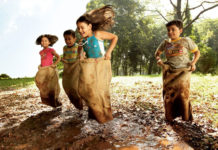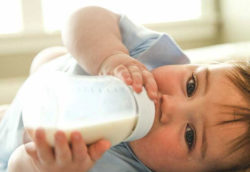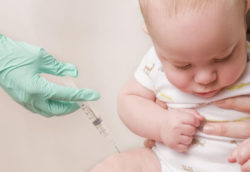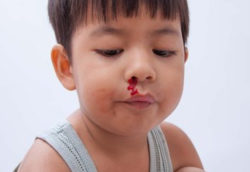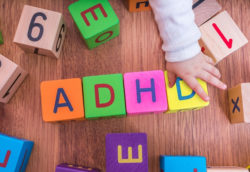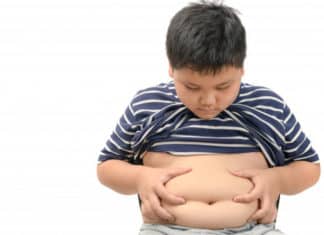Lead poisoning is a common problem in children. It occurs when lead builds up in the body. Below are a few of the causes of lead poisoning in children, and symptoms shown for children and adults affected by lead poisoning.
Lead Poisoning Symptoms In Children:
Signs and symptoms of lead poisoning in children include:
- Loss of developmental skills
- Learning difficulties
- Irritability
- Loss of appetite
- Weight loss
- Sluggishness and fatigue
- Abdominal pain
- Abdominal cramps
- Vomiting
- Constipation
- Hearing loss
- Seizures
- Aggressive behavior
- Sleep problems
- Fatigue
Symptoms In A New Born:
Babies who are exposed to lead, may:
- Be born prematurely
- Have lower birth weight
- Have slowed growth
Symptoms In Adults:
Lead poisoning is also dangerous for adults even. Symptoms which adults show when affected by lead poisoning are:
- High blood pressure
- Muscle and joint pains
- Memory or concentration difficulty
- Headache
- Abdominal pain
- Mood disorders
- Reduced sperm count and abnormal sperm
- Miscarriage, stillbirth or premature birth in pregnant women
- High blood pressure
- Numbness or tingling in the extremities
- Memory loss
- Anemia
- Kidney dysfunction
Lower levels of lead in the body can also cause problems, such as trouble in paying attention, behavior problems(R), learning difficulties, and a fall in intelligence quotient, which measures the intelligence of a person, particularly in young children. Lead, once, consumed, can cause harmful effects throughout the body.
Severity of Lead Poisoning:
If a person, is exposed to high levels of lead, in a short period of time, it is called acute toxicity. Exposure to small amounts of lead over a long period of time is referred to as chronic toxicity.
Causes Of Lead Poisoning In Children:
Mostly, lead is found in lead-based paints, including paint on the walls of old houses, children’s toys and woodwork in many older homes and apartments. Human activities, such as mining, burning fossil fuels and manufacturing, have caused lead to becoming more widespread. Lead, in these days, is also found in batteries, solder, pipes, pottery, roofing materials, and some cosmetics.
The most common sources, from construction materials, such as lead pipes, old water pipes, brass plumbing fixtures, and copper pipes, soldered with lead, can release particles of lead into tap water.
Children are affected by lead poisoning, by chewing on pieces of peeling paint or by consuming household dust or soil. These, in turn, contain tiny chips of the leaded paint from these buildings.
However, lead solder in food cans is still used in some part of the countries.
Lead can also be present in the air, water, and food. It can also be found in foods or juices, which are stored in cans or improperly fired ceramic containers.
Other common sources, where lead can be found are:
1. Soil
Particles released from the lead, through leaded gasoline or paint, can deposit on the soil and can last for a few years. On highways, and in some urban areas, the soil contaminated by lead, is still a major problem.
2. Pottery
The coatings or finishing found on ceramics, china, and porcelain, may contain lead, that can be percolated into the food served by these items, or when food is stored in these pottery items.
3. Cosmetics
An eye cosmetic, from Nigeria, named Tiro, has been linked to lead poisoning.
4. Mexican candy
In Mexico, chances of lead can also be found in an ingredient, Tamarind, which is used to make some candies,
5. Occupations
People who work in auto repair, mining, pipe fitting, battery manufacturing, painting, construction, and certain other fields, are at higher exposure to lead poisoning.
Risk Factors Of Lead Poisoning:
1. Age
Infants and young children are at a higher risk of lead poisoning. Young children, absorb lead more easily, and consumption of lead, is more harmful to them than it is for adults and older children.
2. Living in an older home
Rates of lead poisoning are higher in people who live in older houses, or those people, who are renovating an older home, are at even higher risk.
3. Certain hobbies
Generally, lead solder is used in making stained glass and some jewelry. Using lead to refinish old furniture, may risk you at higher exposure to lead.
How To Lower Risk Of Lead Poisoning In Children?
Keep your children away from peeling paint, and if you are living in an old apartment or building. These peeling paints should be removed, from all surfaces, up to five feet, above the floor.
Lock the rooms, if you are painting or remodeling your old homes. You can place, heavy plastic sheets over doorways and windows, of the work area.
Wash your child’s hands and face before having meals.
If a lot of houses in the neighborhood, are being remodeled, let your family members wipe their feet and remove their shoes, before coming into your house, This will reduce the chances of soil contaminated lead enter your house. You can even, test your water for lead content. If the levels of lead are high, you can use a filtering device or drink bottled water.
Treatment And Diagnosis:
Consult your doctor about a blood lead test for your child. This test is performed on a standard blood sample. The doctor may even include additional tests, to see the amount of iron-storing cells in the blood, X-rays, and a bone marrow biopsy.




